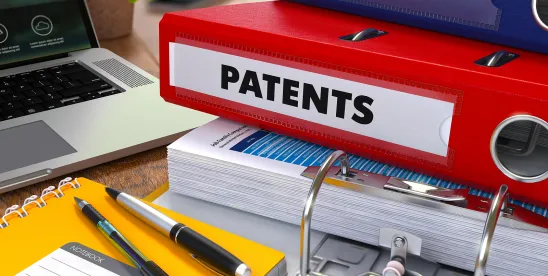Introduction: A Radical Shift in IP Policy
The WSJ reports the Trump administration wants to charge patent holders 1% to 5% of their patent’s value to maintain the patent after grant. If implemented, this would mark a dramatic departure from the traditional flat-fee model. Framed as a revenue-raising measure, the plan would drastically reshape the U.S. innovation landscape.
Potential Impacts on Innovators
Small innovators would be disproportionately affected by the newly proposed fees. Smaller entities often rely on the patent system to protect their inventions but lack the financial resources to absorb significant cost increases. As a result of these fee changes, many smaller companies may opt to use other avenues to protect their innovations, such trade secrets, or may forego investing in IP protection altogether.
Depending on how the value of patents is assessed, larger tech firms, while more capable of absorbing the costs, could respond by filing fewer but more strategically valuable patent applications. This could reduce the prevalence of ‘defensive’ filings and low-value patents, potentially streamlining the system.
Specifically in the biotech and pharmaceuticals spaces, patent protection is critical due to high risks and long timelines associated with product development. The proposed fees could significantly raise the already substantial costs of bringing new products to market. Small biotech firms may find it difficult to protect or license their breakthroughs, potentially leading to reduced investment at early development stages. Medical device manufacturers face similar pressures, where the cost-benefit balance of patenting may shift unfavorably.
The proposal could also result in industry consolidation, more strategic partnerships, or a shift toward trade secrets—developments that may hinder open innovation and collaboration. The net effect could be a leaner patent landscape focused on higher-quality applications and a reduction in “patent thickets,” but potentially at the cost of accessibility and innovation diversity.
How Companies Might Adapt
If the proposal moves forward, companies may explore various strategies to mitigate the impact of the new fees. One likely response is increased reliance on trade secrets, especially for software and process innovations that are easier to keep confidential.
Firms may also shift their patenting focus to international jurisdictions with more predictable or affordable IP regimes. Open innovation models, such as defensive publishing or open-source licensing, could gain popularity as a way to prevent competitors from patenting similar inventions.
Patent pooling and consortia may become more common, allowing companies to share the costs of filing and maintaining patents. Additionally, provisional filings could be used more strategically to delay full applications and manage financial risk.
Broader Implications
The proposed fee structure raises broader concerns about equity and U.S. competitiveness. Higher fees could exacerbate the divide between well-funded incumbents and new entrants, encouraging market concentration and likely reducing diversity in innovation.
The new fees would almost certainly reduce the overall number of filings. There is a strong argument that reduced filings would result in higher-quality patents. While fewer filings might improve patent quality, the cost barrier could prevent disruptive but underfunded ideas from reaching the market. Fewer patents would also raise the stakes of patent disputes.
On the global stage, the U.S. could lose its competitive edge if innovators relocate R&D to countries with more accessible IP protections. Moreover, tying fees to patent value introduces significant uncertainty, as valuation is inherently subjective and prone to dispute.
Of course, the implications of the impact of the proposed fee structure depends greatly on how the valuation is calculated and how it is applied to the patents. Does each individual patent get charged a percentage of revenue of a patented method, system, or product even though the system or product may be protected by dozens or hundreds of patents? Or does the percentage fee get distributed over all the patents attributable to the patented method, system, or product? There could be a scenario in which it is actually better for companies to get more patents to reduce the fees if the percentage is applied across an entire patent portfolio. For example, if a bicycle company makes $1M from sales of an innovative bicycle and there are 1,000 patents on the bicycle and the fee is 1% of revenue distributed over the total number of patents, the fees per patent are $10 and $10,000 for the portfolio of 1,000 patents. Given this example reduces the revenue to the government, it is unlikely to be applied in this manner; however, implementation details for the proposal are missing and whatever the details become, patent owners will find ways to reduce what they are to pay.
Potential Legal Challenges to the Proposal
The proposed fee changes are likely to face significant legal challenges. Under 35 U.S.C. § 41, Congress, not the executive branch, has the authority to set patent fees. Historically, courts have deferred to the USPTO on fee-setting when changes are modest and tied to cost recovery. However, a sweeping, revenue-driven increase could be struck down or stayed unless Congress explicitly authorizes it. Any attempt to implement such a change unilaterally would certainly be contested in court, with challengers likely arguing that a drastic fee hike oversteps executive authority.
Additionally, the Administrative Procedure Act (APA) requires that regulatory changes undergo a notice-and-comment rulemaking process. Failure to comply with this process could result in successful legal challenges. There may also be constitutional concerns. If the fees are prohibitive, small businesses could argue that the fees violate Due Process or Equal Protection clauses, although such claims may be difficult to win.
In sum, the Trump Administration proposal is fraught with questions and uncertainty. Congress and the courts should work to ensure that whatever the proposal is, it is thoroughly vetted and implemented by the correct branch of government.




 />i
/>i

